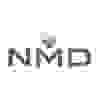
The Shifting Technology Landscape
The Shifting Technology Landscape
Navigating the Convergence of Technological transformation and Equity markets
.
Selected Tech Companies worthwhile following
With a fast growth and IPO potential

Ephos
Ephos designs and manufactures programmable photonic chips on glass for AI data centers and quantum computers. Glass enables ultra-low loss photonic solutions that are robust, scalable, and cost-effective.

NMD Pharma A/S
Expertise in all areas of drug development. Headquartered in Aarhus, Denmark, and collaborate with internationally renowned companies and key opinion leaders in the field of neuromuscular diseases.
Fact finding in progress

Open Chips
A pioneering company in the design of high-performance accelerator chips for advanced computing applications (High Performance Computing – HPC), artificial intelligence (AI), machine learning (ML), and deep learning (DL),
Fact finding in progress
Latest Insights
Our selection of the latest news and articles the latest developments of the ever-evolving technologies driving equity markets
2025年11月22日 · Data centersMicrosoft said Tuesday it is partnering with artificial intelligence company Anthropic and...2025年11月18日 · Artificial IntelligenceNvidia shares have come under pressure in recent days on news of some high-profile investors,...2025年11月15日 · Artificial IntelligenceMeta may be about to lose one of its most renowned AI heads: Yann LeCun, a chief AI scientist at...2025年11月15日 · Artificial IntelligenceOur nation is more important to us than anything. We are in the business of making America...2025年11月15日 · Niche AI chipsRuns 13,000 times as fast as software written for a traditional supercomputer.2025年11月15日 · Artificial IntelligenceChatGPT owner OpenAI is laying the groundwork for an initial public offering that could value the...2025年11月15日 · EuropeThe European Union has had a difficult year in trade policy. On the one hand, the US, Europe’s...2025年11月15日 · Artificial IntelligenceStartups pushing the boundaries of what an AI chip can be. Whether it’s analog computing,...2025年11月15日 · Data centersPlacing data centers in space could pave the way for sustainable computing with unlimited solar...2025年11月15日 · Europe,Data centersOpenchip, a pioneering company in the design of high-performance accelerator chips for advanced...Position papers/Background Info
Fragility of democratic minimalism: why the ballot is insufficient for democracy
Trlllion dollar companies and the threat to democracy
A credible European equity market
How supercomputing will evolve
The convergence of AI and HPC is redefining not only these technologies, but also the ways in which knowledge is produced, and takes a strategic position in the global landscape.
About Jacques Putzeys
Senior finance executive with a robust background in banking, corporate finance, IPOs and board governance.
He co-founded and served as CEO of NASDAQ Europe (formerly Easdaq) from 1995 to 2000, playing a pivotal role in establishing the European arm of the global securities exchange.
In the banking sector, Putzeys held prominent positions including President of Bank Nagelmaeckers and CEO of CGER/Fortis Bank New York, demonstrating his leadership across various financial institutions.
Since 2000 he has assisted a large array of companies with fundraising, preparing for stock market listings and organizing corporate governance.
CONTACT HERE
Technology and IPO readiness
White paper on Technology and IPO readiness exploring how organizations can navigate the rapidly shifting technology landscape highlighting the key enablers, challenges, and strategic imperatives that drive success in public markets.
GET YOUR COPY HERE
Independent IPO Guidance
Our approach ensures you are on the right path—free from conflicts of interest—by helping you understand the key questions to ask and how to assess appropriate fees for each professional involved in the IPO process.
GET IN TOUCH TO DISCUSS
Contact Us
We welcome your inquiries and feedback. Let's collaborate for success in the public markets.
©2025 - Proudly built with Strikingly







